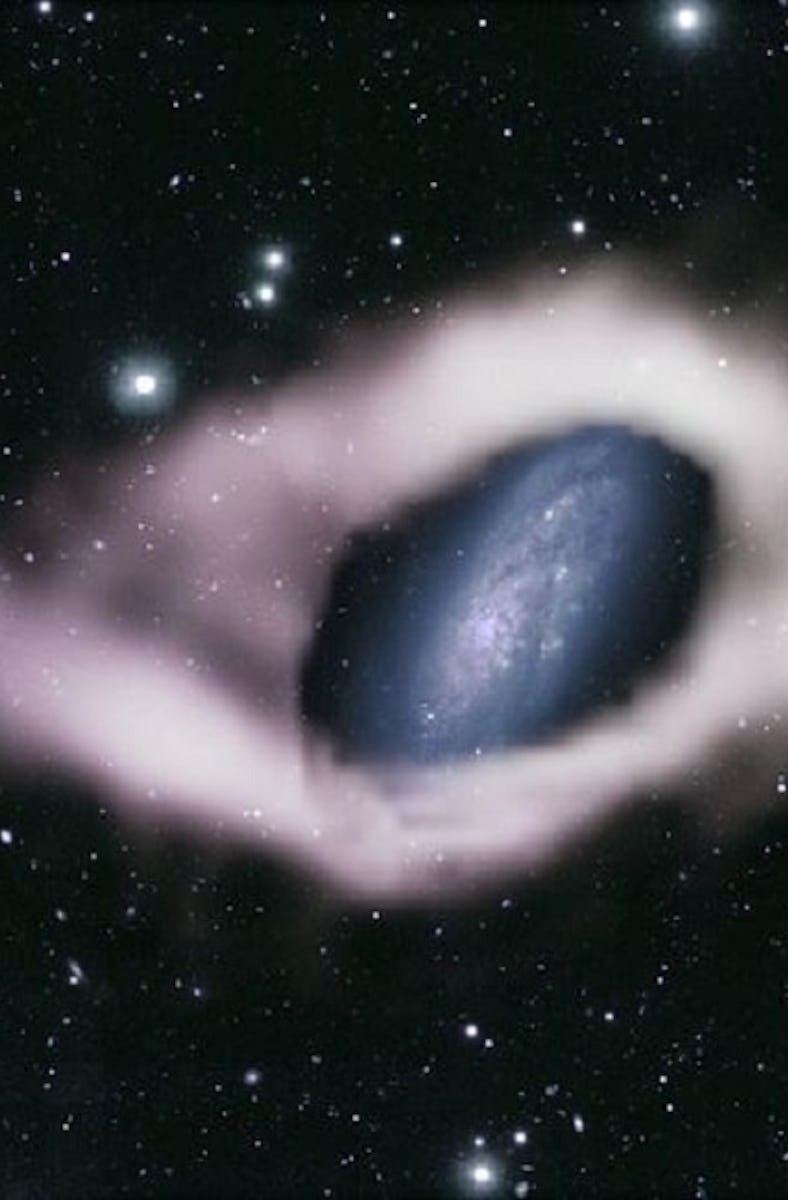Two Newly Discovered Galaxies Appear Bedazzled With Glittering Rings Of Gas
Somebody must have liked spiral galaxies NGC 4632 and NGC 6156.

Rings aren’t just for planets anymore; some galaxies have them, too, on an even grander scale.
Astronomers just discovered a pair of spiral galaxies that appear to be adorned with wispy loops of hydrogen gas, studded with stars, perpendicular to their spiral arms. These galaxies, which astronomers call polar ring galaxies (because the ring orbits the poles), are a rare phenomenon. Studying them could shed new light on how galaxies evolve — and even the mysterious nature of dark matter.
Queen’s University, Canada, astronomer Nathan Deg and his colleagues published their work in the Monthly Notices of the Royal Astronomical Society.
This image combines an image of spiral galaxy NGC 4652 in visible and infrared light (from the Subaru telescope) with a radio wave image of the ring from the WALLABY survey.
Put a Ring on It
For Deg and his colleagues, the newly discovered galaxies were a needle-in-a-haystack kind of find. The astronomers combed through a massive pile of radio telescope data, from a survey that had mapped the hydrogen gas in 600 galaxies just to find two candidates that look like they have polar rings. The two galaxies are called NGC 4632 and NGC 6156, and each is surrounded by a ring of gas and stars, which orbits the galaxy’s center at a right angle to the main galactic disk.
The newfound galaxies and their rings are a rare find; astronomers have found just over 220 polar-ringed galaxies out of tens of thousands of galaxies that have been cataloged so far (and that’s just a tiny fraction of the trillions of galaxies that probably exist in the visible universe).
Astronomers don’t yet know for sure exactly how polar ring galaxies form, but the most likely-looking answer so far involves two galaxies colliding at right angles to each other. In the aftermath of this cosmic crash, the smaller galaxy (which probably got ripped apart by the larger galaxy’s powerful gravity) would end up wrapped around the larger galaxy like a grisly trophy of astronomical conquest.
That means polar ring galaxies could hold important clues about how galaxies interact, merge, and evolve. Studying the rings could also shed some light on dark matter since their rotation could help physicists glean more details about the halo of dark matter that surrounds each galaxy.
The two new galaxies could help with that if follow-up observations confirm that they really are polar ring galaxies. And they could be the first of hundreds of polar ring galaxies spotted by the Widefield ASKAP L-band Legacy All-sky Blind Survey (WALLABY, or the best astronomical acronym in recorded history) if Deg and his colleagues are correct. They predict that between 1 percent and 3 percent of galaxies in the survey could have polar rings.
“If this rate holds true, the WALLABY survey will detect hundreds of new polar ring galaxies,” write Deg and his colleagues in their recent paper.